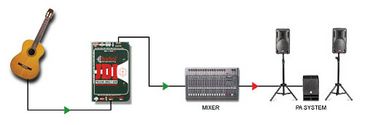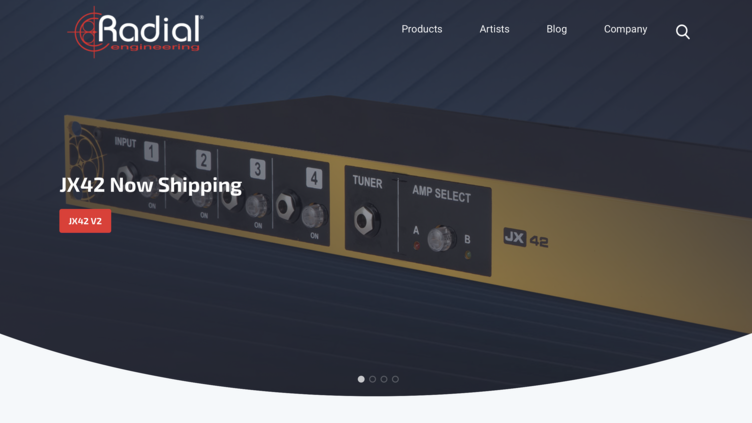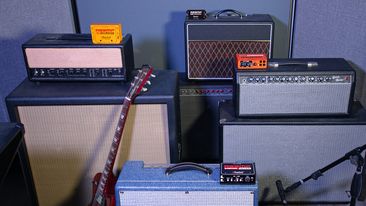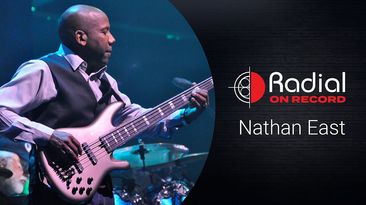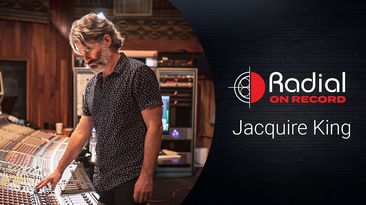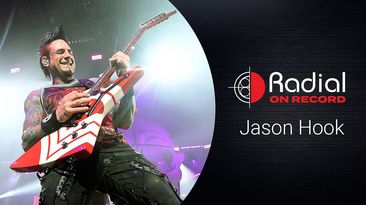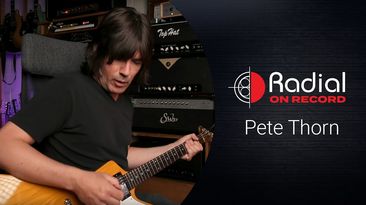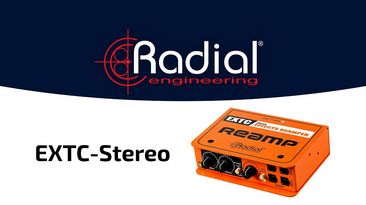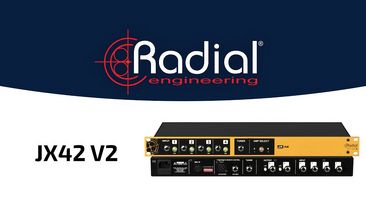What a is a DI box and why do I need it?
A DI box, also called a direct box, converts the unbalanced, high impedance signal output of an instrument to a balanced low impedance mic-level signal.
What exactly is a Direct Box?
Direct Box enables the signal to travel distances of 100 meters (300 feet) without adding appreciable noise. The output of a DI box is mic level – thus the balanced output signal is treated just like a microphone. When playing live, the mixing console is usually positioned in the house (front of house or FOH position) which is often 50 to 100 meters away.
Most instruments such as bass guitar, acoustic guitar and keyboards are connected to a DI box and mixed at FOH. For the sound engineer, capturing the direct sound of the instrument separately from being processed by the artist on stage usually makes it easier to amplify the signal as it can be optimized for the room.
Why do I need a DI Box?
A DI box is primarily used to allow you to run a long cable from an instrument such as an electric guitar or bass guitar without adding noise or losing signal quality. High impedance signals tend to be much more prone to noise and keeping cable lengths under 8 meters (25 ft) is recommended.
In the studio, recording from a separate room (isolation booth) enables the engineer to capture a direct sound from the instrument using a direct box in addition to adding a mic in front of the amplifier to capture the tone generated by the amp. When recording in the control room, you may or may not need a DI box, depending on the tone you are looking for. Most mixer inputs have a ‘one size fits all’ type of instrument input that may not flatter your particular instrument.
A good DI box is optimized to interface with your mixing desk or recording system by presenting the instrument with the right input impedance and converting it to a balanced signal ideal for the console or interface. This can take the edge off the instrument for a smoother, more natural sound. Using a good DI box in the studio also allows for a clean recording of the instrument signal which can then be later played back for reamping.
What kind of DI box should I get? Passive or active?
This is like asking what kind of microphone should I buy. There are basically two types of direct boxes — an active direct box and a passive direct box. But, just as there are all kinds of microphones for all types of applications, there are different kinds, or configurations, of direct boxes for different applications. Just as you could use a dynamic microphone like a Shure SM58 to capture the sound of just about anything, you could buy a Radial JDI passive direct box and be pretty much set.
But sometimes, using a condenser mic can give you the extra reach to capture more sparkle from an acoustic guitar or more detail from a voice when recording. In this case, an active DI box like the Radial J48 is the best choice.
A simple rule of thumb - If the source is active, use a passive DI box. If the source is passive, use an active DI box.
Like dynamic microphones, a passive direct box tends to be able to handle more signal level without distortion, while a condenser mic – like an active DI box – generally produces a wider frequency response while being more sensitive. And just as most studios and live stages are equipped with a selection of dynamic and condenser mics, both passive and active DI boxes are often used side by side. The choice usually comes down to personal preference.
So if you have an old Fender Precision bass with magnetic pickups, an active direct box will probably work best as the buffer will generate plenty of signal for the PA system while reducing the load on the instrument.
If on the other hand, you have a new, high-output active bass with a 9-volt battery inside, you can turn up your volume with confidence knowing that your passive Radial ProDI passive direct box will easily handle the signal without distortion.
Over the years, industry standards for direct boxes have become commonplace. For instance, most engineers prefer to run an acoustic guitar through an active DI like the Radial J48 as it is noted that there is some ‘air’ or openness that can found when pairing an acoustic with an active DI box.
On noise-plagued AC powered devices like keyboards, electronic drums, DJ mixers and other active sources, most engineers will prefer to use a passive DI box like the Radial ProD2 or JDI Stereo. This is because a passive direct box typically handles more level without distortion and is also very efficient in eliminating hum and buzz caused by ground loops.
Radial products mentioned in the article
Interested in Radial Engineering products? Feel free to contact us!
sales@msonic.ee
+327 5399 1710


